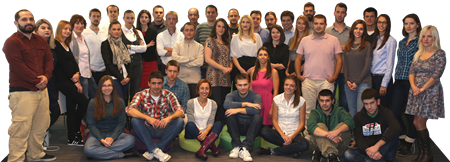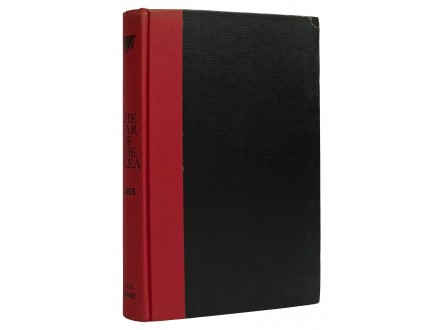War of the Flea: A Study of Guerrilla Warfare (1st ed.)
| Cena: |
| Želi ovaj predmet: | 6 |
| Stanje: | Polovan bez oštećenja |
| Garancija: | Ne |
| Isporuka: | Pošta Post Express Lično preuzimanje |
| Plaćanje: | Tekući račun (pre slanja) Lično |
| Grad: |
Novi Sad, Novi Sad |
ISBN: Ostalo
Godina izdanja: 1965
Jezik: Engleski
Autor: Strani
U dobrom stanju, vrlo retko prvo izdanje.
Nečitak potpis na predlistu, možda potpis autora.
Lyle Stuart, New York, 1965
War of the flea - a study of guerilla warfare - theory and practice
R. Taber
Hardback
Length 192 pages
Lyle Stuart, 1965
Annotation
Theory and practice of modern guerrilla warfare are examined by a journalist who has covered revolutions on two continents. Examples from Cuba, China, southeast Asia, and other countries are presented.
Abstract
Guerrilla warfare is the extension of politics by means of armed conflict. Revolution is its goal. Guerrilla fighters are political partisans: armed civilians whose main weapons are their relationships to the communities in and for which they fight. The strength of the guerrillas lies in their mobility, flexibility, endless sources of manpower, and the fact that time works in their favor. Guerrilla warfare is therefore like the flea, which defeats the much larger and stronger dog through persistence. Guerrillas exploit the conflict between their opponents` goal (defeat of the guerrillas) and necessary means (overwhelming force) to the advantage of the guerrilla movement. Analyses of the conflicts in Cuba, China, Vietnam, Ireland, and elsewhere illustrate these concepts and the political uses of terrorism, the key role played by terrain, and the strategy of urban guerrilla warfare. Guerrilla movement failures in Greece, Philippines, and Malaya show that severing popular contact and support can doom a guerrilla movement. The Vietnam conflict demonstrates both the effectiveness of a guerrilla movement and the failure of conventional forces or special counterinsurgency efforts to defeat it. It is concluded that guerrilla war is a natural weapon which impoverished and exploited people throughout the world use to achieve revolution and will, therefore, increase in much of Africa, Asia, Arab countries, and Latin America. Because of its wealth and power, the u.s. is forced into counterrevolutionary role with no hope of winning against the insurgents. The coming revolutions will have major impacts on u.s. economic interests and its security. Footnotes are included.
Robert Taber traveled to Cuba in the late 1950s as a CBS investigative journalist to cover the country’s burgeoning revolutionary movement. He became an eyewitness to history as he marched from the Sierra Maestra to Havana with the ragtag revolutionaries, led by Fidel Castro and Che Guevara, who forced Batista to flee the country. Taber also wrote M-26: Biography of a Revolution.
************
Robert Bruce Taber (1919–1995) was an American activist, journalist, and scholar.
Taber was born in Chicago in 1919, and grew up in Detroit and Dundee, Illinois, and served in the U.S. Army during World War II. He worked as a journalist in New York City, for the Queens Evening News and then for a wire service, the Standard News Association, before joining CBS News in 1950.
Taber traveled to Cuba in the late 1950s as a CBS investigative journalist, accompanying Fidel Castro, Che Guevara, and their troops, who forced Cuban leader Fulgencio Batista to flee the country. He wrote M-26: Biography of a Revolution (first published by Lyle Stuart in 1961 about this experience.
Taber founded the Fair Play for Cuba Committee (FPFCC), characterized on the record of 1961 United States Senate hearings `as serving to glorify the Castro government and acting as its publicity agent`.
Taber also covered the Bay of Pigs Invasion in 1961, joint to the government forces as journalist, according to Cuban photographer Ernesto Fernández.
Taber`s best known work is The War of the Flea: The Classic Study of Guerrilla Warfare, about `guerrilla insurgencies and their relationship to state power`. The book was first published in 1965, and has since been reissued. In it, Taber examines guerilla patterns in Cuba, China, Algeria, Indochina, Ireland, Israel, Cyprus, the Philippines, Malaya, and Greece, among others.
*************
“The guerrilla fights the war of the flea, and his military enemy suffers the dog’s disadvantages: too much to defend; too small, ubiquitous, and agile an enemy to come to grips with.” With these words, Robert Taber began a revolution in conventional military thought that has dramatically impacted the way armed conflicts have been fought since the book’s initial publication in 1965. Whether ideological, nationalistic, or religious, all guerrilla insurgencies use similar tactics to advance their cause. War of the Flea`s timeless analysis of the guerrilla fighter’s means and methods provides a fundamental resource for any reader seeking to understand this distinct form of warfare and the challenge it continues to present to today’s armed forces in the Philippines, Colombia, and elsewhere.
gerilski rat, gerilsko ratovanje, gerila, kuba
L_I_Č_N_O______P_R_E_U_Z_I_M_A_NJ_E_:
Za kupovine ukupne vrednosti preko 3.000 dinara moguće lično preuzimanje u Puškinovoj u Novom Sadu. Ako je za pojedinačnu knjigu navedena samo opcija Pošta, lično preuzimanje samo te knjige nije moguće. U Novom Sadu moguća je lična dostava i plaćanje preko službe Eko-kurir (cena je 250-350 din).
STANJE KNJIGE:
Knjiga koju dobijate je ona koja je na slici. Ukoliko nije naznačeno da je knjiga nova ili nekorišćena, ponekad se desi da na predlistu stoji potpis, posveta ili pečat i da to nije navedeno u opisu. Ako vam takve stvari smetaju, pitajte me pre kupovine da proverim.
KOMUNIKACIJA:
Komunikacija ide isključivo preko Kupindo poruka, ne telefonom. Budite normalni.
POPUSTI, CENKANJE I SL.:
Cena je ta koja piše, molim vas da mi ne šaljete pitanja o poslednjoj i zadnjoj ceni niti svoje kontraponude.
SLANJE:
Knjige šaljem kao tiskovinu ili CC paket nakon uplate na račun. Pakujem ih bezbedno i pažljivo, dobijate ih u stanju u kojem su poslate. Poštarina za jednu pošiljku obično iznosi od 190 do 260 din, u zavisnosti od težine. To je poštarina za tiskovinu, CC paket je skuplji, post ekspres je najskuplji. Za četiri i više pojedinačno kupljenih knjiga (u to ne spadaju kompleti) ja snosim troškove poštarine. Potrebno je da uplatite/preuzmete knjigu u propisanom roku od 7 dana.
SUSEDNE ZEMLJE I INOSTRANSTVO:
Poštarina je za jednu knjigu visoka i okvirno se kreće od 10-15 eur za prvu i oko 7 eura za svaku dodatnu knjigu. Postoji mogućnost znatno isplativijeg slanja za teže pakete. Uplate PayPalom (+10%), direktno na devizni račun, Western Union ili Moneygram. Najbolje je da pre kupovine pitate koliki su troškovi dostave, jer su često veći od cene same knjige.
INTERNATIONAL ORDERS:
I will send abroad. For your calculation, one hundred dinars roughly equals $1. Please register here:
https://www.limundo.com/Registracija/Kupindo
and then PM me on the link below for postage costs (they usually start at around 15 euro for the first book and 7 euro for each additional one)
https://www.kupindo.com/Clan/ndi/PostaviPitanje
MOJA PONUDA:
Nove knjige postavljam gotovo svaki dan. Možete ih pratiti na ovom linku http://www.limundo.com/Clan/ndi (pritisnite dugme `Prati`)
¤¤¤¤¤¤¤¤¤¤¤¤¤¤¤¤¤¤¤¤¤¤¤¤¤¤¤¤¤¤¤¤¤¤¤¤¤¤¤¤¤¤¤¤¤¤¤¤¤¤¤¤¤¤¤¤¤¤¤¤¤¤¤¤¤¤¤¤¤¤¤¤¤¤¤¤¤¤¤¤¤¤¤¤
Predmet: 69825881







